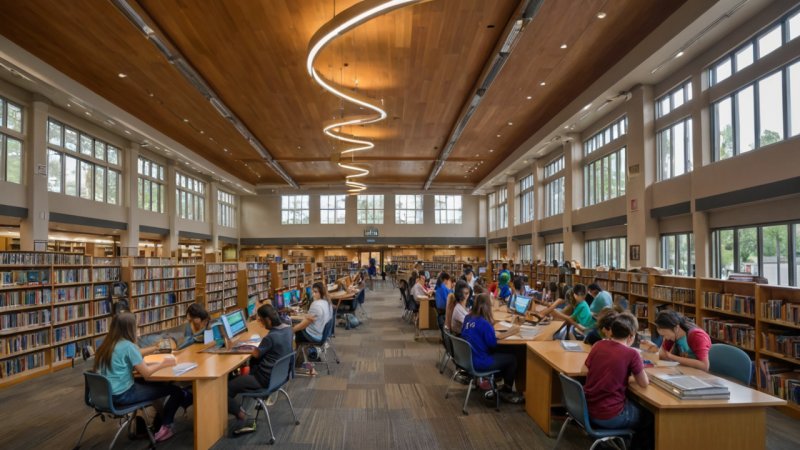Libraries have long been recognized as essential pillars of literacy and education in communities. Among the various types of libraries, public libraries and school libraries play significant yet distinct roles in fostering a love for reading and learning. In this article, we will explore the similarities and differences between public libraries and school libraries, examining their contributions to literacy, accessibility, and community involvement.
Overview of Public Libraries
Public libraries serve the entire community, offering resources and programs for individuals of all ages. They are typically funded by local government, which allows them to provide a wide range of services, including access to books, digital media, and community programs.
Pros of Public Libraries
- Diverse Resources: Public libraries offer extensive collections that cater to various interests, including fiction, non-fiction, reference materials, and digital resources.
- Community Programs: Many public libraries host events such as storytime sessions, reading clubs, and workshops that promote literacy and community engagement.
- Accessibility: Public libraries are open to everyone, providing a safe space for individuals to learn and grow regardless of their background.
Cons of Public Libraries
- Funding Challenges: Public libraries often face budget cuts, which can limit their resources and programs.
- Variable Quality: The quality of services and resources can vary significantly from one public library to another, depending on funding and community support.
Overview of School Libraries
School libraries, on the other hand, are specifically designed to support the educational needs of students and teachers within a school setting. They focus on providing resources that align with the curriculum and enhance students' learning experiences.
Pros of School Libraries
- Curriculum Integration: School libraries often curate collections that support specific subjects and grade levels, making it easier for students to find relevant materials.
- Collaboration with Educators: School librarians frequently work closely with teachers to develop lesson plans and promote literacy initiatives within the classroom.
- Targeted Support: School libraries can offer specialized programs, such as research skills workshops, which help students develop essential academic skills.
Cons of School Libraries
- Limited Access: Access to school libraries is restricted to students and staff, which may exclude community members who could benefit from their resources.
- Resource Constraints: School libraries often operate on limited budgets, which can restrict the range of materials and programs they can offer.
Comparative Analysis
Accessibility
One of the most significant differences between public and school libraries lies in their accessibility. Public libraries are accessible to everyone in the community, providing a safe and welcoming environment for all. In contrast, school libraries primarily serve the students and staff of a specific school, limiting access to those outside the educational institution.
Resource Availability
When it comes to resource availability, public libraries tend to have a broader range of materials, including adult literature and resources for lifelong learning. School libraries, however, focus on educational materials that align with the curriculum, which may limit their collection to age-appropriate and subject-specific books.
Community Engagement
Public libraries often engage with the community through various programs, fostering a sense of belonging and encouraging literacy among all age groups. School libraries, while also engaging students, primarily focus on educational initiatives and may not have the same level of community outreach.
Funding and Support
Both public and school libraries face funding challenges, but the sources of their funding differ. Public libraries rely on local government funding and community support, while school libraries are typically funded through school district budgets. This difference can impact the resources and programs available at each type of library.
Conclusion
In conclusion, both public libraries and school libraries play vital roles in promoting literacy and education, albeit in different ways. Public libraries offer a diverse range of resources and community programs accessible to all, while school libraries focus on supporting students' educational needs within the school environment. Understanding the strengths and limitations of each type of library can help communities better leverage their resources to foster a culture of reading and learning. Ultimately, both public and school libraries are essential in the fight against illiteracy and the promotion of lifelong education.






